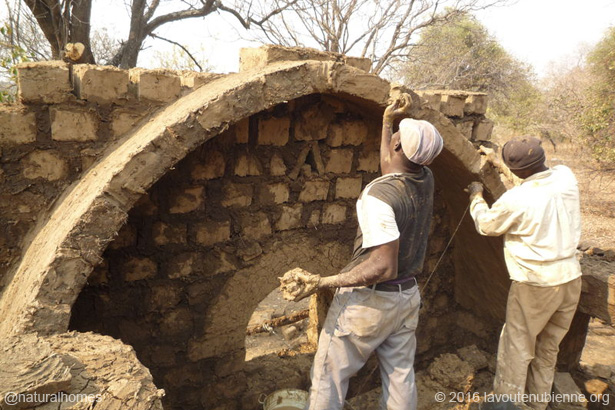A Pattern Language
of Natural Homes No.220 Roof Vaults
|
|
This is one of a series of articles about
A Pattern Language
by Christopher Alexander where we illustrate and discuss the
patterns using homes and buildings made from natural materials
like stone, clay, wood and straw.
|
|
|
|
|
 |
|
|
|
|
|
| |
|
Alexander admits that this pattern is the most
contentious of them all. A roof carries with it cultural heritage and social
expectations which he tries to avoid by a fundamental analysis of the roof
while still meeting the requirements of the related patterns such
as No.117 the
Sheltering Roof.
|
|
|
 |
|
|
|
|
|
|
|
|
|
|
|
|
|
|
|
|
The criteria he identifies are that the roof:
-
satisfies the psychological sense of safety;
-
provides a lived in space rather than just a hat
above the living spaces;
-
give an indication of the social layout of the
building; should not be a complicated contrived structure;
-
should avoid bending requiring tensile materials,
-
and should shed rain and snow suitable for its
climate.
Taking other patterns in to consideration then
collectively these exclude the flat roof, pitched roof and
geodesic domes; ironically a popular structure many eco-villages
like to play with.
Alexander notes (from 1977 when his book was
published) that, "we believe these tension materials [wood,
steel] will become more and more rare".
|
|
 |
|
|
|
|
|
|
|
The scarcity of tensioning
materials like wood is exactly why the non-profit organisation
La Voute
Nubienne helps communities in Africa to build the roof vault
solution Alexander proposed 35 years earlier. Their work in
sub-Saharan Africa is helping to replace the traditional use of
timber for roofing. Population growth in the region, together with
increasing desertification and regression of forested areas, means
that the traditional use of timber is no longer feasible.
|
|